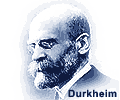Soviet Past in Value, Image and Symbolic Space of Russian Identity
Evgenyeva T.V.,
Cand. Sci. (Hist.), Associate Professor, Associate Professor of Department of Political Sociology and Psychology, Faculty of Political Science, Lomonosov Moscow State University; Professor, Political Science and Communication Program, Sociology and Political Science Department, Financial University under the Government of the Russian Federation, etv@mail.ru
elibrary_id: 76115 | ORCID: 0000-0002-4711-5476 | RESEARCHER_ID: J-1957-2018
Selezneva A.V.,
Dr. Sci. (Pol. Sci.), Lecturer of the Chair of Sociology and Psychology of Politics, Faculty of Political Science, M.V. Lomonosov Moscow State University, ntonina@mail.ru
elibrary_id: 604572 |
DOI: 10.17976/jpps/2016.03.04
Evgenyeva T.V., Selezneva A.V. Soviet Past in Value, Image and Symbolic Space of Russian Identity. – Polis. Political Studies. 2016. No. 3. P. 25-39. (In Russ.). https://doi.org/10.17976/jpps/2016.03.04
The article analyzes social, cultural and psychological bases of Soviet image, value and symbolic actualization in modern Russia. The data from political values and images of the Soviet past in the study of mass consciousness of Russian citizens, on the one hand, and image and symbolic space of the political communication of public institutions, political parties and public organizations of the Russian Federation, on the other, is analyzed. The analysis is based on the political and psychological concept of national identity which involves the study of the three components of this phenomenon: the political images, the political values and symbols. The analysis defined the main stages of transformation of the Soviet past representation in the citizens’ mind and in public policy of the post-Soviet period: the stage of destruction of the Soviet image of the world (1990-ies.), the stage of fragmentary interest (2000s.) and the stage of system-functional actualization (2010-ies.). The authors show that actualization of Soviet imagery and symbols, which are generally deprived of the ideological component, is currently in process. Perceptions of earlier historical epochs are not symbolically significant for the citizens and are fragmentary represented by the mass media in connection with some events or anniversaries, while the image of the Soviet past is firmly stored in the people’s historical memory and is transmitted to the next generations. The study concludes, that the appeal to images and values of the Soviet past (deprived, as a rule, of their ideological component) was a response to the ongoing process of finding value, image and symbolic bases for Russian national identity.
See also:
Evgenyeva T.V., Titov V.V.,
Nation-State Identity Formation of the Russian Youth. – Polis. Political Studies. 2010. No
Evgenyeva T.V., Smulkina N.V., Tsymbal I.A.,
Russia’s Place in the World in the Perception of National Citizens: Identification Dimension. – Polis. Political Studies. 2020. No4
Pushkaryova G.V.,
Ideas and Values as a Method of Constructing Symbolic Space of the National Identity. – Polis. Political Studies. 2017. No5
Semenenko I.S., Lapkin V.V., Pantin V.I.,
Identity in the system of coordinates of the world development. – Polis. Political Studies. 2010. No3
Zvyagelskaya I.D.,
Symbols and Values in International Relations in the Middle East. – Polis. Political Studies. 2019. No1





.jpg)






 print
print
.jpg)
.jpg)